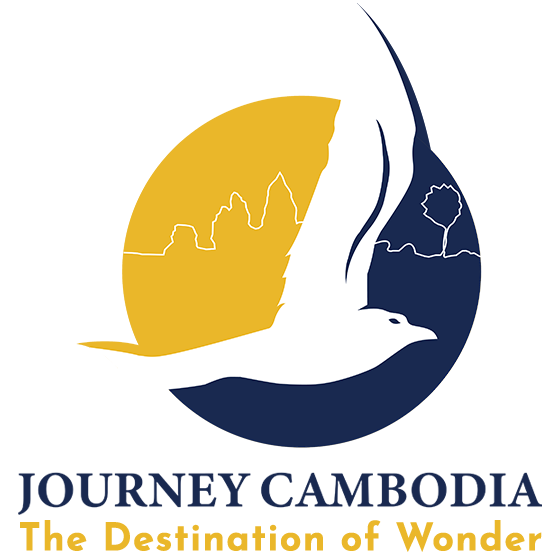5 Empty Angkor Temples No One Visits (While 5,000 Jam Into Just One)
Why fight the crowd at Angkor Wat… when five silent giants are just sitting there, wide open?
The Ultimate Guide to Cambodia’s Secret Temple Circuit That 95% of Tourists Never See
While 5,000 people crowd around Angkor Wat each morning for sunrise, I walked through five completely empty temples that morning. 5 Angkor Empty Temples exist just minutes from the main circuit. Most tourists miss these peaceful spots completely.
Cambodia sits in Southeast Asia between Thailand and Vietnam. Siem Reap serves as the gateway to the Angkor Archaeological Park. The country’s capital, Phnom Penh, lies about 200 miles southeast. But Siem Reap draws most visitors who want to see the famous temples of the Khmer Empire.
The main temples get crazy busy. Angkor Wat sees over 2.6 million visitors yearly. Bayon Temple in Angkor Thom draws massive crowds too. But smart travelers know about the empty alternatives.
Secret temples near Siem Reap where you can walk almost alone while thousands fight for photos at the main sites
Why These 5 Angkor Empty Temples Stay Peaceful
Tourism patterns create this amazing opportunity. About 90% of visitors stick to three temples: Angkor Wat, Bayon, and Ta Prohm. The other 88+ temples in the park remain quiet.
Several factors keep these temples empty:
- Tour operator focus – Most packages only cover “greatest hits”
- Transportation barriers – Some temples need special vehicles
- Information gaps – Guidebooks barely mention these spots
- Time constraints – Day-trip visitors rush through main sites
This concentration problem actually helps independent travelers. You can have entire temple complexes to yourself.
| Main Circuit Temples | Daily Visitors | Alternative Temples | Daily Visitors |
|---|---|---|---|
| Angkor Wat | 6,000-9,000 | Preah Khan | 200-400 |
| Bayon | 4,000-6,000 | Banteay Kdei | 150-300 |
| Ta Prohm | 3,000-5,000 | Ta Nei | 50-100 |
The numbers tell the whole story. While thousands fight for photos at the famous spots, you’ll have these places almost to yourself.
1. Preah Khan – The Forgotten Temple Complex
Preah Khan ranks among my top 5 Angkor Empty Temples picks. This massive complex covers 140 acres. Jayavarman VII built it in 1191 as both monastery and university.
What Makes Preah Khan Special
The temple complex once housed 100,000 people. Monks, teachers, and students lived within these walls. Now, massive trees grow through the ruins. Nature and stone architecture blend perfectly.
Walking through Preah Khan feels like time travel. Collapsed galleries create natural tunnels. Tree roots wrap around door frames. Morning light filters through gaps in the stone ceiling.
The main entrance features a causeway lined with guardian statues. Most visitors enter from the west gate. But I recommend the east entrance – it’s usually completely empty.
Key Features:
- Central sanctuary with four entrances
- Hall of Dancers with detailed carvings
- Two-story Dharani building (rare in Angkor)
- Sacred sword shrine (Preah Khan means “sacred sword”)
Best Time to Visit Preah Khan
Early morning works best – between 7:00-9:00 AM. Most tour groups hit Angkor Wat for sunrise first. This gives you 2-3 hours of solitude at Preah Khan.
The temple sits about 2 miles northeast of Angkor Thom. You can reach it by bicycle in 20 minutes from the main road. Tuk-tuks cost around $3-5 for the short trip.
Photography tips: The tree-root areas work best in soft morning light. Bring a tripod for the darker interior spaces. The east-west orientation means afternoon light hits the main sanctuary beautifully.
Ultimate Guide to Angkor’s Remote Temples – Beyond the Usual Spots
2. Banteay Kdei – The Peaceful Monastery
Banteay Kdei sits right across from Srah Srang reservoir. Yet most people skip it completely. This jungle temple offers everything visitors want – peace, great photos, and amazing history.
Jayavarman VII built this Buddhist monastery in the late 12th century. The name means “Citadel of Chambers.” Monks lived and studied here for centuries.
Architecture and Layout
The temple follows the classic Bayon style. Face towers once decorated the main gates. Sadly, many collapsed over time. But the remaining structures show incredible detail.
Four concentric enclosures create a maze-like layout. Each wall has cardinal direction entrances. The inner sanctuary sits at the center. Side chambers branch off the main corridors.
What to Look For:
- Dancing apsara carvings on doorways
- Buddhist imagery mixed with Hindu elements
- Original wall paintings (very rare in Angkor)
- Meditation chambers for monks
The eastern entrance works best for entry. Most groups (if any) use the western gate. Walking clockwise through the complex takes about 45 minutes at a relaxed pace.
Why Banteay Kdei Stays Empty
Location plays a big role. The temple sits between more famous sites. Tours usually stop at Ta Prohm first, then rush to Angkor Wat. Banteay Kdei gets skipped in the middle.
The layout also confuses first-time visitors. Multiple entrances and courtyards can feel overwhelming. But this maze-like quality makes exploration more fun. You’ll find new details on every visit.
Journey Cambodia offers a Banteay Srei and Grand Circuit Heritage Tour that includes Banteay Kdei. This full-day experience covers multiple quiet temples in one trip.
3. Ta Nei – The True Hidden Temple
Ta Nei wins the prize for most secret spot among my 5 Angkor Empty Temples. This small temple hides in the forest between Ta Keo and Angkor Thom. No signs point the way. GPS coordinates help: 13.4428°N, 103.8589°E.
Finding Ta Nei
The temple sits about 500 meters into the jungle from the main road. A dirt path leads through the trees. Look for the turnoff about halfway between Ta Keo and the Victory Gate of Angkor Thom.
Many visitors walk right past the entrance. The path looks like any other forest trail. But follow it for 10-15 minutes. The temple appears suddenly through the trees.
Ta Nei dates to the late 12th century. Jayavarman VII probably commissioned it. The style matches other Buddhist temples from that period.
What You’ll Find
The temple is small but perfectly formed. A central tower sits inside a single enclosure wall. Four entrances face the cardinal directions. Stone carvings cover most surfaces.
Nature has partly reclaimed Ta Nei. Tree roots grow over walls. Moss covers many carvings. But this adds to the atmosphere. You feel like an explorer making a new discovery.
The temple rarely sees any visitors. I’ve spent hours there without seeing another person. Locals from nearby villages sometimes visit to pray. But tourists almost never find it.
Photo Opportunities:
- Central tower framed by jungle
- Detail shots of weathered carvings
- Tree roots and stone combinations
- Light filtering through forest canopy
Wildlife is common around Ta Nei. I’ve seen monkeys, tropical birds, and butterflies. The jungle setting makes this one of the most peaceful spots in all of Angkor.
Beyond Angkor – Cambodia’s Secret Temple Treasures That Most Tourists Never See
4. East Mebon – The Island Temple
East Mebon offers something completely different among the 5 Angkor Empty Temples. This temple once sat on an island in a massive reservoir. The water is gone now. But the temple remains on its artificial hill.
Rajendravarman built East Mebon in 953 AD. It honored the king’s ancestors and the Hindu god Shiva. The temple predates Angkor Wat by almost 200 years.
The Unique Setting
The East Baray reservoir once covered 16 square miles. East Mebon sat right in the center on a small island. Boats carried visitors to religious ceremonies.
Today, rice fields cover the old reservoir bed. East Mebon rises from this flat landscape like a man-made mountain. The elevated position gives great views in all directions.
Five towers crown the temple. The central tower represents Mount Meru – the center of the Hindu universe. Four smaller towers mark the corners. Large stone elephants guard each corner of the temple platform.
Why Visit East Mebon
The temple sees far fewer visitors than the main circuit sites. Groups usually skip it or make very quick stops. This gives you time to really examine the architecture.
The brick construction differs from most Angkor temples. Stone facing covers some areas. But much of the original red brick remains visible. Detailed stucco work decorates many surfaces.
Climbing to the Top:
- Central tower offers 360-degree views
- Steep stairs require careful climbing
- Best views are early morning or late afternoon
- Sunset photos work well from the western side
The temple sits on the Grand Circuit route. Most visitors focus on Preah Khan and Neak Pean instead. This leaves East Mebon relatively peaceful even during busy times.
What Does Eastern Mebon Temple Represent? The Meaning Behind Eastern Mebon Temple in Cambodia
5. Banteay Srei – The Pink Temple Paradise
Banteay Srei technically isn’t empty. But it sees way fewer crowds than the main temples. This small temple sits 25 kilometers northeast of Angkor Wat. The distance keeps casual visitors away.
The temple name means “Citadel of Women.” Local legend says women built it because the carving work is so detailed. Actually, a Brahmin priest commissioned Banteay Srei in 967 AD.
The Most Beautiful Temple in Angkor
Banteay Srei uses pink sandstone instead of gray. The softer stone allowed for incredibly detailed carving. Every surface shows intricate decoration. Many experts call it the finest carving work in all of Angkor.
The temple is much smaller than others in this list. You can walk around the entire complex in 30 minutes. But plan to spend 2-3 hours studying the carvings. Every doorway and wall panel tells a story from Hindu mythology.
Famous Carvings Include:
- Monkey army battle scenes from the Ramayana
- Dancing Shiva destroying the universe
- Guardian demons with fierce expressions
- Apsara dancers in flowing robes
The eastern entrance has the most famous carving. It shows the demon king Ravana shaking Mount Kailash. The detail work includes individual fingers and facial expressions.
Getting to Banteay Srei
The temple sits about 45 minutes by car from Siem Reap. Most tours combine it with other distant temples. Journey Cambodia’s Banteay Srei and Grand Circuit Heritage Tour makes an excellent day trip option.
Tuk-tuks can make the journey but it takes over an hour each way. Cars or minivans work better for this distance. Private transport costs $40-60 for the round trip.
Early morning visits work best. Tour groups usually arrive between 10 AM and 2 PM. Getting there by 8 AM gives you quiet time with the temple.
Beyond the Main 5: More Empty Temple Options
These five temples just scratch the surface. Angkor Archaeological Park contains over 90 temple sites. Many others stay completely empty most days.
Prasat Kravan and the Brick Temples
Prasat Kravan features five brick towers in a row. Built in 921 AD, it’s one of the oldest temples in Angkor. Beautiful bas-reliefs cover the interior walls. These show Hindu gods carved directly into the brick.
The temple takes about 20 minutes to explore fully. It sits on the Small Circuit route but most people drive past quickly. Stop here for unique brick architecture and peaceful surroundings.
Ta Som – The Eastern Gate Temple
Ta Som sits at the eastern end of the Grand Circuit. Most tours run out of time before reaching it. The small temple features a famous tree growing through the eastern gate tower.
Buddhist king Jayavarman VII built Ta Som in the late 12th century. Face towers once crowned the gates. The eastern tower collapsed long ago. A massive strangler fig tree now grows through the ruins.
Jungle Temples Beyond the Circuits
Some of the most empty temples require special trips. Koh Ker sits 120 kilometers northeast of Siem Reap. This remote site was the capital of the Khmer Empire from 928-944 AD.
Beng Mealea lies 65 kilometers east of Angkor Wat. Trees and vines completely cover this massive temple complex. It feels like exploring a lost civilization.
Journey Cambodia offers specialized jungle temple tours that visit both Koh Ker and Beng Mealea. These full-day adventures take you far from the crowds.
Planning Your Empty Temple Adventure
Transportation Options
Bicycle works best for temples within 10 kilometers of Siem Reap. All my main 5 Angkor Empty Temples are reachable by bike. The Small and Grand Circuits have good paved roads.
Tuk-tuk gives more flexibility without the physical effort. Expect to pay $15-20 per day for Small Circuit tours. Grand Circuit trips cost $25-35 per day. Drivers usually speak basic English.
Motorbike rental offers maximum freedom. Daily rates run $6-8 for automatic scooters. You need an international driving permit. Traffic around the temples stays light.
Private car makes sense for distant temples like Banteay Srei. Daily rates with driver cost $40-60. Air conditioning helps during hot season visits.
Temple Pass Options
Three pass types work for temple visits:
| Pass Type | Duration | Price | Best For |
|---|---|---|---|
| One Day | Single day | $37 | Main temples only |
| Three Day | Valid 10 days | $62 | Moderate exploration |
| Seven Day | Valid 30 days | $72 | Complete temple circuit |
The three-day pass gives the best value for visiting the 5 Angkor Empty Temples. You can spread visits across several days. This prevents temple fatigue and allows for different lighting conditions.
Best Times to Visit
Dry season (November-March) offers the most comfortable weather. Temperatures stay cooler. Rain rarely interferes with temple visits. But this is also peak tourist season.
Wet season (April-October) means fewer crowds at all temples. Your 5 Angkor Empty Temples become even more peaceful. Afternoon storms can interrupt visits. But mornings usually stay clear.
Daily timing matters more than season for empty temples:
- 6:00-8:00 AM: Coolest temperatures, best light
- 11:00 AM-2:00 PM: Fewest tour groups (lunch time)
- 4:00-6:00 PM: Golden hour photography, cooler weather
What to Bring
Essential items for empty temple visits:
- Plenty of water (2-3 liters per person)
- Sun protection (hat, sunscreen, sunglasses)
- Comfortable walking shoes with good grip
- Flashlight for dark temple interiors
- Insect repellent for jungle temples
Photography gear recommendations:
- Camera with manual settings
- Tripod for low-light situations
- Extra batteries (heat drains them quickly)
- Lens cleaning kit for dusty conditions
Respectful clothing is required at all temples:
- Shirts covering shoulders
- Pants or skirts covering knees
- Remove shoes when entering central sanctuaries
- Avoid bright or revealing clothing
The Cultural Impact of Temple Tourism
Supporting Local Communities
Visiting the 5 Angkor Empty Temples helps spread tourism benefits beyond the main sites. Local guides from villages near these temples need work too. Your visits create income for families who live around the lesser-known temples.
Beng Mealea and Koh Ker sit in very poor rural areas. Tourism provides crucial income for local communities. Specialized tours like Journey Cambodia’s jungle explorer experience employ local guides and drivers from these remote villages.
Temple entrance fees fund conservation work. But most money goes to maintaining Angkor Wat and other crowded sites. The empty temples need support too. Your visits help justify spending money on their preservation.
Preserving Archaeological Sites
Overcrowding damages the famous temples. Angkor Wat shows real wear from millions of visitors walking on ancient stones. The 5 Angkor Empty Temples face the opposite problem – not enough attention.
Without regular visitors, these sites can decay faster. Local authorities focus resources on the busy temples. The quiet ones get minimal maintenance funding.
Responsible tourism helps both problems. Spreading visitors across more sites reduces pressure on Angkor Wat. It also creates reasons to maintain the empty temples properly.
The Khmer Empire Legacy
The Khmer Empire reached its peak between 1010-1220 AD under kings like Suryavarman II and Jayavarman VII. These rulers built hundreds of temples across the region. Only a fraction survived in good condition.
Each temple tells part of the empire’s story. Angkor Wat represents the pinnacle of Khmer architecture. But the smaller temples show daily religious life. Monks lived and studied at places like Preah Khan and Banteay Kdei.
Understanding this history makes temple visits more meaningful. You’re not just taking photos. You’re walking through the remains of one of history’s great civilizations.
Adventure Tours Beyond the Temple Walls
Preah Vihear – The Mountain Temple
For the ultimate empty temple experience, consider Preah Vihear. This UNESCO World Heritage site sits on a cliff 625 meters above sea level. The remote location means very few tourists make the journey.
Preah Vihear sits near the Thai border, about 3.5 hours from Siem Reap. The temple complex stretches along a mountain ridge. Views extend for miles across northern Cambodia.
Journey Cambodia’s Preah Vihear Adventure makes this remote temple accessible. The full-day tour includes transport in 4WD vehicles for the final mountain ascent.
Combining Temple Visits with Other Activities
Siem Reap offers much more than temples. Many visitors enjoy:
- Tonle Sap Lake floating village tours
- Cambodian cooking classes with market visits
- Traditional dance performances at local theaters
- Cycling tours through rice paddies and villages
- Quad biking adventures in the countryside
Journey Cambodia specializes in combining temple visits with these cultural activities. Multi-day itineraries can include the 5 Angkor Empty Temples plus other authentic experiences.
Photography Workshops and Sunrise Tours
Many visitors obsess over Angkor Wat sunrise photos. But the 5 Angkor Empty Temples offer better photography opportunities without the crowds.
Preah Khan provides incredible sunrise shots through tree-covered ruins. East Mebon gives panoramic views of the surrounding countryside. Ta Nei creates mysterious jungle atmosphere photos.
Professional photography tours focus on these quieter temples. You get better instruction without fighting crowds for positions. The lighting and composition opportunities often exceed the famous spots.
Which Month is Ideal for Visiting Angkor Wat? Complete 2025 Guide
Weather and Seasonal Considerations
Dry Season Temple Visits (November-March)
Peak tourist season brings cooler weather but bigger crowds. Even the 5 Angkor Empty Temples see more visitors during these months.
December-January offers the most comfortable temperatures. Highs reach 28-30°C (82-86°F). Humidity stays relatively low. No rain interrupts temple visits.
February-March gets hotter as the dry season progresses. Temperatures can hit 35°C (95°F) by midday. Early morning temple visits become essential.
Wet Season Advantages (April-October)
April-May marks the hottest period. Temperatures regularly exceed 38°C (100°F). But this also means the fewest tourists at all temples.
June-October brings afternoon storms. Mornings usually stay dry for temple visits. The 5 Angkor Empty Temples become even more peaceful during rain season.
Green season benefits:
- Dramatically fewer tourists at all sites
- Lush jungle growth around temples
- Filled temple moats and reservoirs
- Afternoon storms cool temperatures
- Much cheaper accommodation rates
Dealing with Heat and Humidity
Temple exploration requires physical effort. Cambodia’s tropical climate makes this challenging. Smart planning prevents heat exhaustion:
Start early – Begin temple visits by 6:00 AM Take breaks – Rest in shade every 30-45 minutes
Drink constantly – Consume 200-300ml water every 15-20 minutes Wear protection – Long pants, long sleeves, hat, sunglasses Know your limits – Temple visits can wait if you feel overheated
Safety and Security Around the Temples
General Safety Guidelines
The 5 Angkor Empty Temples are generally very safe. Violent crime against tourists is extremely rare in Cambodia. But basic precautions make sense:
Travel in groups when possible, especially at remote temples like Ta Nei Inform others of your planned temple route and return time Carry emergency contacts including hotel and local tour company numbers Stick to marked paths – unexploded ordnance exists in some rural areas
Wildlife Encounters
Jungle temples attract various wildlife. Most animals avoid humans. But some encounters are possible:
Monkeys live around many temples. Don’t feed them or carry visible food. Keep bags zipped. Monkeys can grab items quickly.
Snakes exist in jungle areas but rarely cause problems. Stick to clear paths. Wear closed shoes. Make noise when walking through tall grass.
Insects cause more problems than large animals. Use insect repellent with DEET. Cover exposed skin during dawn and dusk when mosquitos are most active.
Medical Considerations
Siem Reap has good medical facilities. But remote temples sit far from hospitals. Consider these health factors:
Heat-related illness poses the biggest risk. Know the symptoms of heat exhaustion. Rest immediately if you feel dizzy, nauseous, or stop sweating.
Dehydration develops quickly in Cambodia’s climate. Drink water before feeling thirsty. Urine color indicates hydration levels – aim for light yellow.
Basic first aid knowledge helps for minor cuts and scrapes. Bring bandages and antiseptic. Temple stones can be sharp and slippery.
Final Thoughts on Cambodia’s Empty Temple Circuit
After exploring dozens of temples across Cambodia, these 5 Angkor Empty Temples remain my favorites. Each offers something unique that the crowded main circuit cannot match.
Preah Khan gives you the chance to feel like an explorer in a lost city. Banteay Kdei shows Buddhist temple life without tour group noise. Ta Nei truly feels like a personal secret spot. East Mebon provides perspective on ancient engineering. Banteay Srei displays the finest stone carving in Southeast Asia.
Cambodia’s temple tourism will continue growing. Soon, even these peaceful sites might see larger crowds. Visit them now while they remain special. Experience the Khmer Empire the way it should be experienced – with time, space, and respect for the incredible civilization that created these masterpieces.
The contrast with Angkor Wat couldn’t be sharper. While thousands fight for the same sunrise photo, you can have entire temple complexes to yourself. That’s the real magic of the 5 Angkor Empty Temples – they let you connect with ancient Cambodia in peace.
Ready to experience these peaceful temples yourself? The 5 Angkor Empty Temples wait for visitors who want more than crowded tourist sites. Contact Journey Cambodia to plan your empty temple adventure. Our local guides know every quiet corner and secret spot. We’ll show you the temples that 95% of tourists never see.
Start with a sunrise at Preah Khan instead of Angkor Wat. Walk through Ta Nei without another soul in sight. Watch the sunset from East Mebon with only the sounds of nature around you. These experiences change how you see Cambodia forever.
Helpful Resources
- Angkor Archaeological Park Official Guide – Comprehensive temple information and maps
- Cambodia Tourism Board – Current visa requirements and travel advisories
- Weather Underground Cambodia – Accurate local weather forecasts for trip planning
- Journey Cambodia Temple Tours – Specialized guides for empty temple experiences
- UNESCO Angkor World Heritage Site – Conservation efforts and historical background









